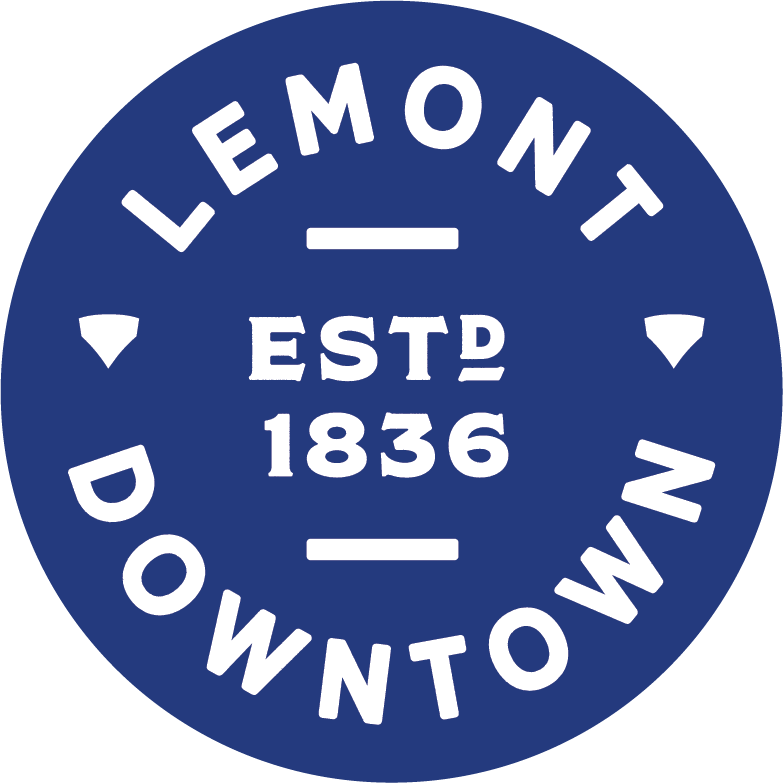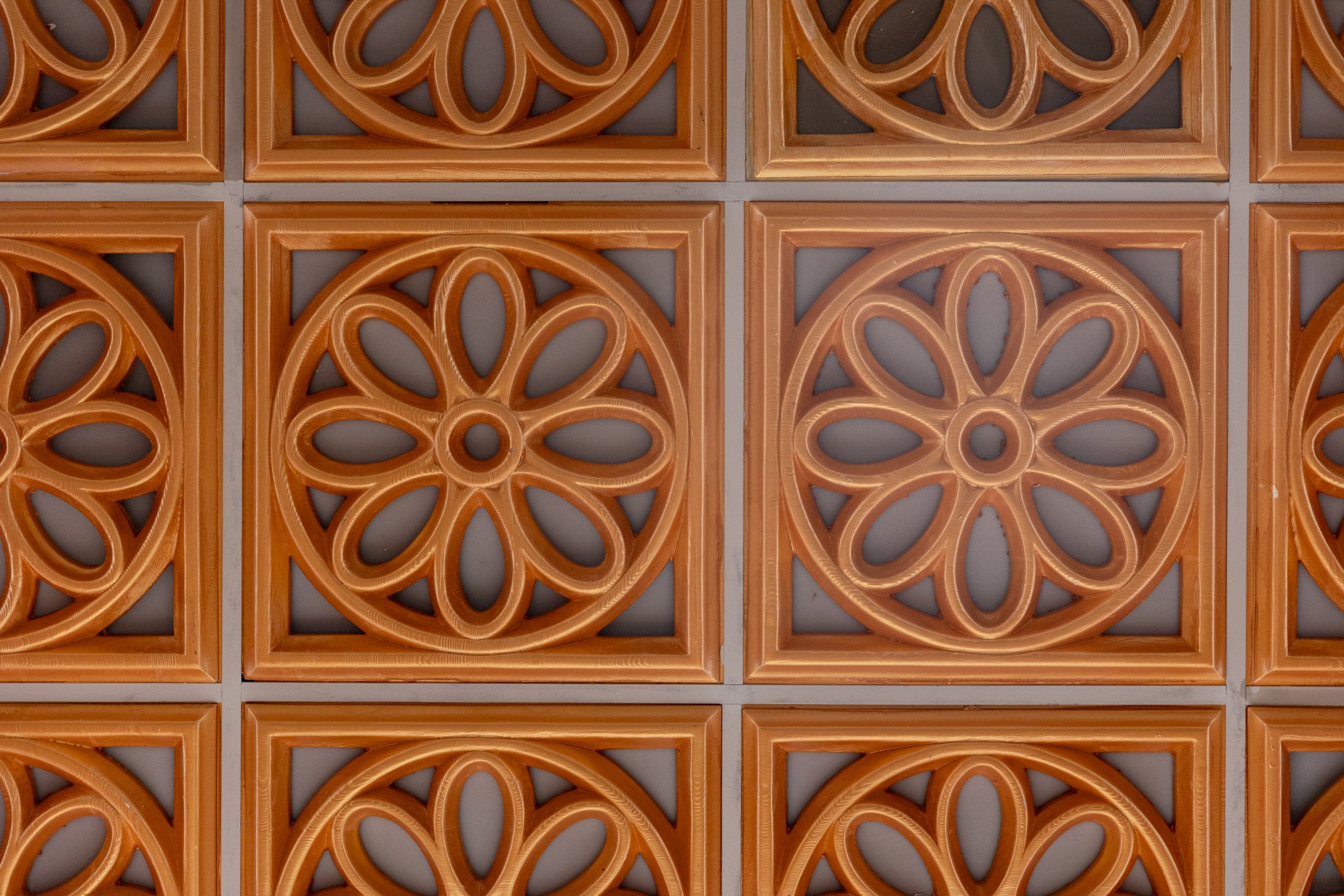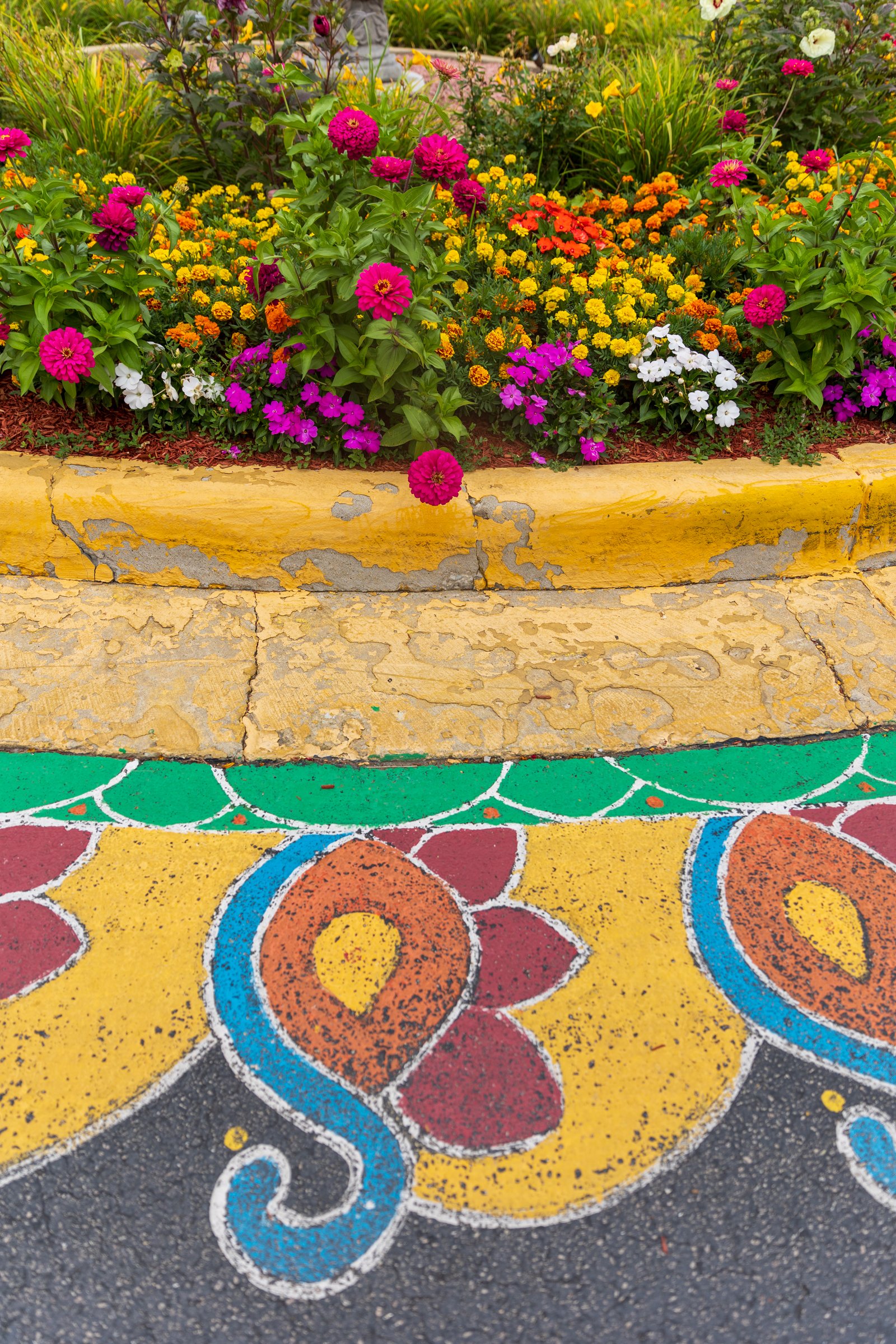A Bridge of Faith
All photos by Molly Hebda Photography | Hindu Temple of Greater Chicago
Since the late 19th century, Lemont has been known as a community connected through faith. When early immigrants settled along the Des Plaines, they built the churches that became known as Lemont’s seven steeples. It was within those steeples that they shared their cultures, practiced their religion, and connected with their community.
Nearly a century later, a new group of immigrants settled around the Chicago area and formed The Hindu Temple of Greater Chicago, forging a community centered around religion, culture, and humanitarianism.
The Sri Rama Temple in the Chola style of architecture
A New Home
In the latter part of the 20th century, thousands of people were immigrating to America, specifically to Chicago, from all of India. They found opportunities here and maintained their culture through food, music, dance, and the Hindu faith. As the Hindu population grew, they needed a place to maintain their religious practice in their community. The idea to build a temple flourished and the Hindu community raised $1 million for the construction.
After considering multiple locations, the Lemont site best served as the home for the Hindu Temple of Greater Chicago not only due to its accessibility and seclusion but also because of the site's location at the top of a hillock. Traditionally, Hindu temples are located at the highest point in a community that people look up to.
In 1986, President Dr. Krishna P. Reddy led the construction of the Sri Rama Temple. With millions of Hindus throughout the Midwest, early founders anticipated the temple would serve as a magnet religious site attracting over 100,000 visitors annually.
Dissimilar to Christianity, most Hindu sub-schools and sects do not seek to convert. In a 1986 article of the Chicago Tribune, Dr. Reddy states, “Our idea is not to try to convert anybody. [Rather] our idea is to try and preserve what we have and see if our children can preserve our religious heritage and at the same time work within the customs of the United States.”
Symmetrical ornamentation details the ceiling of the temples.
We Are One
The construction of a Hindu temple is around the belief that all things are one and everything connects. The symmetry-driven structures appear with circles and squares, depicting perfect geometric shapes and a grid of padas, marks or steps relating back to the Sanskrit term pAdana meaning ‘who or what goes or moves.’ The Hindu Temple of Greater Chicago welcomes both devotees of Shiva (Shaivas or Shaivites) and devotees of Vishnu (Vaishnavas or Vaishnavites). Its campus has two main temple complexes, one for each of these sects. The Ganesha-Shiva-Durga Temple (Shiva) is in the Kalinga style of architecture (North Indian) and is tan in color on the outside. The Sri Rama Temple (Vishnu) is in the Chola style of architecture (South Indian) and has a white exterior. The temples and interior ornamentation throughout were hand-crafted by artisans who came all the way from India to build these sacred spaces. This temple complex with 2200 registered members and more than 50,000 devotee visits a year, serves its mission through hundreds of volunteers and a resolute staff.
Views of the Ganesha-Shiva-Durga Temple in the foreground and Sri Rama Temple in the background, with the complex between connecting them.
As you walk around the campus, you will see the temples cradled by colorful flowers–beautifully maintained by the temple’s Landscaping Committee. Even a central roundabout is hand painted with decorative patterns by volunteers.
Beautiful landscaping fills the campus thanks to the Temple’s landscaping committee.
A roundabout near the Temple’s entrance features a decorative hand painted border.
The interior spaces are quiet places of worship. There are specific areas for worship that form part of a guided tour. Devotees are not to enter the deity shrines. The temple spaces and shrines feature an abundance of sculptures and carvings of the deities. The current president of the Temple, Dr. Bhanoo Sharma, has invested in bringing more color to the spaces of worship–with newly painted pillars and trim in a rainbow of colors.
In addition to the spaces of worship, the Temple includes various community rooms for events and performances. With tens of thousands of devotees visiting the campus annually, and up to 5,000 devotees and visitors on weekends and on certain festival days, the temple has become one of the largest in the world outside of India. Devotees travel from surrounding states and throughout the Chicagoland area to visit the campus. The temple is open year-round except for solar and lunar eclipses over the Midwest as this constitutes an inauspicious period to conduct worship.
Colorfully painted pillars and trim adorn the worship spaces.
Throughout the week, individuals and groups may sign up for tours. Tours of the temple are available on a frequent basis for interested non-Hindu groups. Tour groups must request permission from the Manager (manager@htgc.org).
HTGC asks that all visitors respect the sacred spaces by wearing modest clothing that covers the arms and chest. Skirts and dresses must be below knees for ladies; men to avoid shorts, full pants or Indian dhotis are necessary. Removing shoes at assigned areas, and limiting photography inside the temples is a requirement.
As part of their services and activities, HTGC offers:
Vidyalaya: a school that offers the opportunity to educate and connect Hinduism and Indian Culture for children and adults. Students learn languages, basic religion courses, performance arts, and even recitation of Vedas. You will find regular Sunday school classes, camps, workshops, and Bhakti yoga classes.
Library: This allows children and adults to borrow books for entertainment, education, or research. The library consistently offers activities and workshops for kids and is open for parents and grownups that may be worshiping at the temple.
Yoga: This class is open to all in the area and has received community awards. Find adult classes offered at least three times per week and kids classes offered at least two times per week. Typical classes are Saturday (9-10:30 am), Monday (6:30-8 pm) and Wednesday (6:30-8 pm). Yoga offers the opportunity to train the body and mind while helping the spirit achieve inner peace, love, joy, and complete harmony with the universe.
Health Clinic: Devotees of the temple can receive monitoring of their height/weight, blood sugar, blood pressure, BMI, and other routine health services on the 1st Sunday of every month. Physicians in attendance provide referrals when necessary.
Gift Shop: The gift shop offers a wide selection of products from sarees and dhotis to a spice shop that sells Indian plants like Tulsi, Curry leaf, and Jasmine while available in season.
Meditation: Open to the public during temple hours is the Ritu Meditation Hall at Swami Vivekananda Spiritual Center. The center is available for spiritual activities like meditation, Yoga Classes, and Spiritual Tutoring classes.
Vivekananda Shrine: Next to the Meditation Hall stands a 10-foot bronze statue of Swami Vivekananda, a Hindu Monk and religious teacher who visited Chicago during the World’s Parliament of Religions in 1893.
Two Kitchens: Devotees coming from far and near, staying for extended hours on weekends need to take food breaks at the two dining halls. The kitchens also cater food for weddings, birthdays, and other religious events conducted at the temples.
Supporting their community remains the focus of the HTGC mission along with sharing the culture and heritage with its members. The leadership of the temple is constantly checking in with what devotees may need.
Vivekananda Shrine featuring statue of Swami Vivekananda.
Ritu Meditation Hall at Swami Vivekananda Spiritual Center.
In Good Faith
While Hinduism is a peaceful religion, it is one of the multiple houses of worship that face the sad reality that they may be a target of violence. In partnership with the Federal Emergency Management Agency (FEMA) of the United States, the temple has received grants to upgrade security and add additional surveillance to make sure its members are safe to practice freely.
More than that, the membership is strong and passionately believes that we are all one. A rededication ceremony held every 12 years continues to bless, renew, and dedicate themselves to their mission of spreading love and joy. The fellowship continues to welcome non-practicing Hindus and other denominations to their space with empathy and compassion. Events like a Walkathon, Diwali, and Holi are large draws that bring in people from all over to worship and celebrate.
The Hindu Temple of Greater Chicago is proud to be a member of the Village of Faith — a fortified community that believes no matter where we come from, what language we speak, or what we believe – we are all deserving of belonging to a community that shares our belief in something greater.
Lemont Downtown contributors with our guide (from left): Tina Figueroa, Sudha Rao, Jason Berry, Rachael Aziz.
Thank you to HTGC past president and longtime volunteer Sudha Rao for sharing information about the Temple with our team and for the informative tour!
The Hindu Temple of Greater Chicago
10915 Lemont Road, Lemont IL 60439-8859
Website: htgc.org
Phone: (630) 972-0300











